 W
WA favela is a type of low-income informal settlement in Brazil that has experienced historical governmental neglect. The first favela, now known as Providência in the center of Rio de Janeiro, appeared in the late 19th century, built by soldiers who had nowhere to live following the Canudos War. Some of the first settlements were called bairros africanos. Over the years, many former enslaved Africans moved in. Even before the first favela came into being, poor citizens were pushed away from the city and forced to live in the far suburbs. Most modern favelas appeared in the 1970s due to rural exodus, when many people left rural areas of Brazil and moved to cities. Unable to find places to live, many people found themselves in favelas. Census data released in December 2011 by the Brazilian Institute of Geography and Statistics (IBGE) showed that in 2010, about 6 percent of the Brazilian population lived in favelas and other slums. Favelas are located in 323 of the 5,565 Brazilian cities.
 W
WAntônia is a 2006 Brazilian drama musical film which tells the story of Antônia, an Afro-Brazilian hip-hop girl group formed by four young women living on a favela of São Paulo. On their way to the mainstream success, they have to face with the violence near their homes and the sexism of the musical business. The film was directed by Tata Amaral and stars Negra Li, Cindy Mendes, Leilah Moreno and Quelynah as the members of the group.
 W
WCantagalo–Pavão–Pavãozinho is a bairro (neighborhood) and a group of favelas in the South Zone of Rio de Janeiro, Brazil, located between the bairros of Ipanema and Copacabana. As of 2010, it has circa 5,000 inhabitants.
 W
WThe Cidade de Deus is a West Zone neighbourhood of the Rio de Janeiro city. It is also known as CDD among its inhabitants.
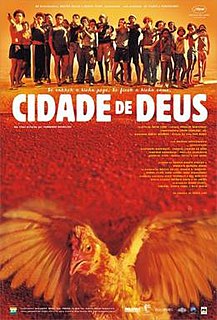 W
WCity of God is a 2002 Brazilian crime film co-directed by Fernando Meirelles and Kátia Lund, released in its home country in 2002 and worldwide in 2003. Bráulio Mantovani adapted the story from the 1997 novel of the same name written by Paulo Lins, but the plot is loosely based on real events. It depicts the growth of organized crime in the Cidade de Deus suburb of Rio de Janeiro, between the end of the 1960s and the beginning of the 1980s, with the film's closure depicting the war between the drug dealer Li'l Zé and vigilante-turned-criminal Knockout Ned. The tagline is "If you run, the beast catches you; if you stay, the beast eats you."
 W
WComplexo do Alemão is a group of favelas in the North Zone of Rio de Janeiro, Brazil.
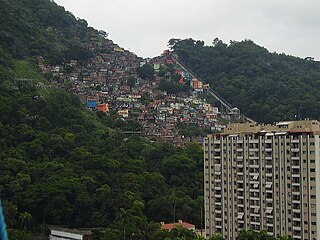 W
WFavela Santa Marta is a favela located in the Botafogo and Laranjeiras part of the Morro Dona Marta, that is also divided with the neighborhoods of Flamengo, Cosme Velho and Silvestre, in the South Zone of Rio de Janeiro, Brazil. It has about 8000 residents, with 500 wooden houses, 2000 brick houses, 4 kindergartens, 3 bakeries, 2 sports fields, 1 block of a samba school, 3 military units and 1 small market. The favela is one of the steepest in the city.
 W
WFavela Painting is the name of a series of community artwork in Rio de Janeiro, Brazil painted by Dutch artists Jeroen Koolhaas and Dre Urhahn with the help of local people. Firmeza Foundation, an organization based in Netherlands runs the project. The project is mainly funded by grants and donations and the main idea is to collaborate with the local people to create community artwork.
 W
WFavela Rising is a 2005 documentary film by American directors Jeff Zimbalist and Matt Mochary. It was produced by Sidetrack Films and VOY Pictures. It debuted at the Tribeca Film Festival on April 24, 2005 where it won the award for Best New Documentary Filmmaker for Zimbalist and Mochary. The film's look at life in Brazil's slums won it further awards such as Best Documentary Film from the New York Latino Film Festival and Best Feature Documentary from Big Sky Documentary Film Festival. The film has won over twenty-five international festival awards and was short-listed for an Oscar.
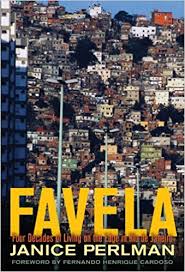 W
WFavela: Four Decades of Living on the Edge in Rio de Janeiro is a book by Janice Perlman published by Oxford University Press in 2010. It primarily documents the experiences and history relayed through conversation by locals to Perlman during her time living in the informal settlements surrounding Rio de Janeiro. The author also provides her own interpretation of social relations within these communities, and discusses the manner in which residents have shaped their collective destinies through the formation of associations.
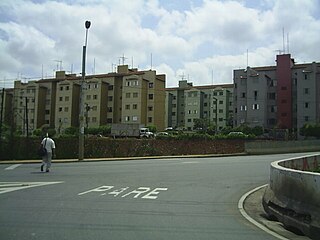 W
WHeliópolis is a favela in the Sacomã district of São Paulo. It has around 200,000 inhabitants and has developed into a serviced neighbourhood from its beginnings as a squatted settlement in the 1970s.
 W
WJacarezinho is a Brazilian neighborhood and also a favela with more than 60,300 residents living in an area of 40 ha. The place is located in the North Zone of Rio de Janeiro city, and it borders the neighborhoods of Jacaré, Méier, Engenho Novo and Triagem. It is the third largest favela in Rio de Janeiro, only behind Rocinha and Complexo do Alemão. The favela expanded along with the city's industrialization, and it became the biggest favela in Rio de Janeiro by the mid-20th century, with a population of 23,000 in 1960. The crucial element in its growth was the industrial boom in the nearby Méier district after World War II, according to historian by Julio César Pino, author of a book about Jacarezinho.
 W
WMangueira is a shantytown neighborhood (favela) in the city of Rio de Janeiro, Brazil, centered on the Mangueira hill or morro. It is most famous for its samba school, the Grêmio Recreativo Escola de Samba Estação Primeira de Mangueira, called for short Estação Primeira de Mangueira or simply Mangueira, which is one of strongest competitors in the annual Rio Carnival samba competition.
 W
WThe Morro da Babilônia is a hill in the Leme neighbourhood of Rio de Janeiro, separating Copacabana beach from Botafogo. It is home to a favela known by the same name, as well as the favela Chapéu Mangueira. Morro da Babilônia is an environmentally protected area.
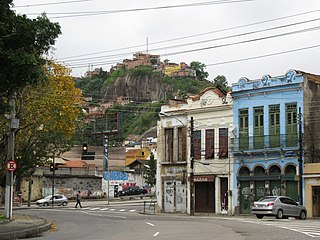 W
WMorro da Providência is a favela located between the two Rio de Janeiro districts of Santo Cristo and Gamboa. It has an altitude of 115 metres and is located in the port area of the city. It is widely considered to be the first favela community in Brazil."The granite hump of Providencia gazes down like a stern guardian on the old port of Rio de Janeiro. It offers probably the finest viewpoint over any city I know."
 W
WMorro dos Prazeres - "Hill of Pleasures" - is a favela in the Southern Zone, the Zona Sul of the Brazilian metropolis Rio de Janeiro. It is part of the quarter Santa Teresa, which is roughly 2.5 km northeast, and although considered pacified, has recently been the site of murders by gunshot of two tourists who inadvertently wandered into the community. "" Settlement of the Morro dos Prazeres began in 1940 and the census of 2010 suggested a population of 2136 people. The mountain, respectively hill, the favela is named after has an altitude of 275 metres.
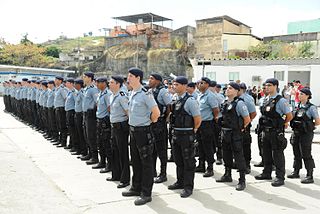 W
WThe Pacifying Police Unit, abbreviated UPP, is a law enforcement and social services program pioneered in the state of Rio de Janeiro, Brazil, which aims to reclaim territories, most commonly favelas, controlled by gangs of drug dealers. The program was created and implemented by State Public Security Secretary José Mariano Beltrame, with the backing of Rio Governor Sérgio Cabral. The stated goal of Rio's government is to install 40 UPPs by 2014. By May 2013, 231 favelas had come under the UPP umbrella.
 W
WParaisópolis is a neighborhood of São Paulo city, which is part of the Vila Andrade district, in the south zone.
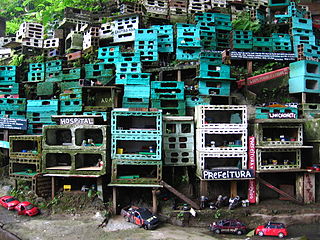 W
WProject Morrinho is a social and cultural project based out of the Favelas Cariocas and the Favela (Pereirão) in the Laranjeiras neighborhood of Rio de Janeiro, Brazil. Morrinho, which was started by local youth in 1997, is a 450m² model of the city constructed from bricks and other recycled materials. It began as a simple childhood game to escape from the realities of violence and corruption that surrounded the teens and their community.
 W
WRocinha is the largest favela in Brazil, located in Rio de Janeiro's South Zone between the districts of São Conrado and Gávea. Rocinha is built on a steep hillside overlooking Rio de Janeiro, and is located about one kilometre from a nearby beach. Most of the favela is on a very steep hill, with many trees surrounding it. Around 100,000 people live in Rocinha, making it the most populous favela in Brazil.
 W
WVidigal is a neighborhood and also a favela in Rio de Janeiro, Brazil.
 W
WVigário Geral is a neighborhood in the North Zone of Rio de Janeiro with a large favela.